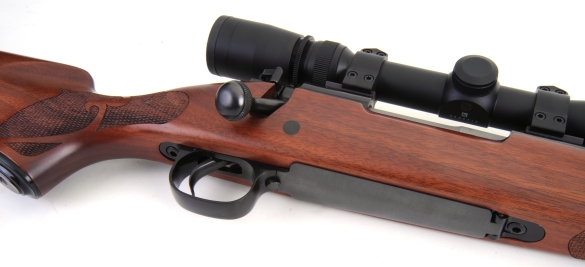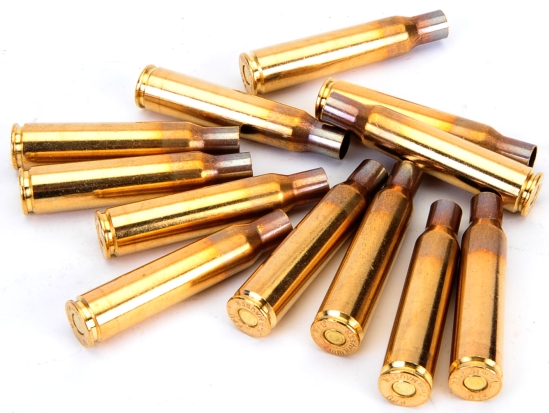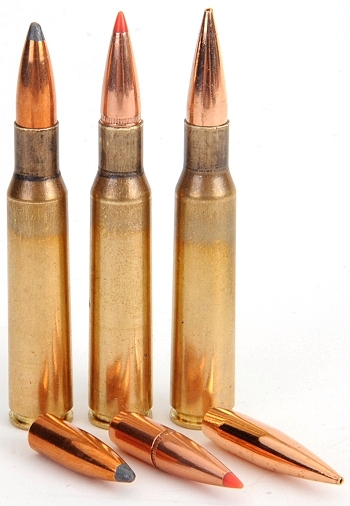
It amazes me how few firearms in the United States are chambered for the 7×57 Mauser these days. It is such a well proven cartridge and certainly the equal of the much more recently created 7mm-08 Remington. The chamber is a big plus for hunters and recreational shooters within the current Winchester Model 70 Featherweight lineup.

Introduced in 1892 as a military cartridge 1-2), commercial firearm manufacturers have ridden the ebb and flow of market demand, moving rifles chambered for the 7mm Mauser in and out of production. The peak of availability began post WW II and lasted as long as inexpensive military surplus rifles and ammunition lasted. Winchester history with the cartridge dates back to 1930 and the Model 54, continuing on to the Model 70 with out of production period similar to other manufacturers 3).
The 7x57mm poses an interesting problem for manufacturers that is not unlike the problem they have with the 45-70 Gov’t and 45 Colt. Ammunition pressure specifications were established consistent with weaker firearms of the day, which limits the potential of these cartridges with modern and much stronger firearms. Pump up the pressure to levels more consistent with current firearms and cartridges and there is the risk of someone loading this ammo into older firearms that may or may not withstand the additional strain. Maintain the original pressure levels and run the risk of low appeal to modern firearm enthusiasts.

Why not just go with the 7mm-08 Remington and move on? The 7x57mm has approximately 5-6 grain greater capacity than the 7mm-08 Remington and it is typically chambered in a long action firearm. The combination of those two circumstances gives a handloader a good deal of latitude in charge, bullet and overall length determination. Plus, the 7×57 Mauser, at full potential, will outperform the 7mm-08 Remington.
Real Guns® worked all of this out in public previously during a Ruger No.1 project, but here we had a bolt action rifle with a 22″ barrel which we felt was closer to an ideal configuration. The three handloads selected have performed well for us, a good balance of power and handload restraint, and three good hunting bullets: left to right -Sierra ProHunter 120 grain, Hornady SST 139 grain and Berger 140 grain.
The Winchester Featherweight has less freebore than the Ruger No.1 in this chamber, which is of no consequence in the context of these handloads because they fall well below the maximum possible cartridge overall length for each bullet.
Only because you asked…
Like all first time handloading efforts with a firearm, it is always good to know where everything is between cartridge and chamber with specificity of bullet. I never assemble with the bullet out as far as possible. Personally, in a good barrel I don’t think there is a measureable difference in accuracy. When I do load with a bullet out beyond spec of recommendation from a reloading manual, it is almost always to recover powder capacity when juggling for best performance.
|
Contact length is where the respective bullet made contact with the rifling leade.. “Groove Diameter Slug” was measured with a 0.284″ pin gauge inserted in the gauge’s modified case mouth. This is the slightly more than groove diameter freebore just forward of the chamber and up to the beginning of the rifling at groove diameter and ogive taper is not a factor. Actual freebore measured 0.250″.
I encountered two issues while assembling loads. The first was a short seater plug in a set of Lee Precision dies. Backed out just enough to not crimp the case, the plug did not have enough length to seat the Sierra or Hornady and just barely seated the Berger. We fabricated a new longer plug and that solved the problem. Problem with CIP Spec brass not fitting Lee, RCBS or Redding shell holders. A little clean up with a die grinder solved the problem.
|
|||||||||||||
|
|
|
|
|
|
|
|
|
|
|
| Sierra ProHunter | 120 | 54.9 | 2.935 | H414 | 54.0 | 3234 | 2770 | 0.8 | |
| Hornady SST | 139 | 51.6 | 3.000 | H414 | 50.0 | 3034 | 2842 | 0.8 | |
| Berger VLD Hunting | 140 | 52.2 | 3.010 | H414 | 50.5 | 3022 | 2819 | 0.6 | |
In comparison to the Ruger No.1 with the same ammo, the pick up with the Winchester, from top to bottom, was 80 fps, 101 fps and 57 fps respectively. The Berger bullet looks like this in flight –
|
Berger 140 Grain – +3 Max Ordinate Yields 301 Yards Point Blank Range |
|||||||||
| Yards | 0 | 50 | 100 | 150 | 200 | 250 | 300 | 350 | 400 |
| Velocity – fps | 3022 | 2928 | 2835 | 2744 | 2655 | 2567 | 2482 | 2398 | 2316 |
| Energy – ft.-lbs. | 2838 | 2664 | 2498 | 2340 | 2190 | 2048 | 1914 | 1787 | 1666 |
| Momentum – lbs-sec | 1.87 | 1.81 | 1.76 | 1.70 | 1.64 | 1.59 | 1.54 | 1.49 | 1.43 |
| Path – in. | -1.5 | 1.0 | 2.5 | 3.0 | 2.3 | 0.3 | -3.0 | -7.6 | -13.8 |
Again, not for military surplus firearms. Not for older bolt action firearms. Does not comply with SAAMI pressure specification. All disclaimers and suggestions appearing before the data tables apply. Great cartridge, terrific little rifle.
1) Mauser Bolt Action Rifles – Olson
2) Mauser Military Rifles of the World – Ball
3) Winchester, An American Legend – Wilson
Winchester’s Model 70 Featherweight Part 1
Winchester’s Model 70 Featherweight Part 2

Email Notification